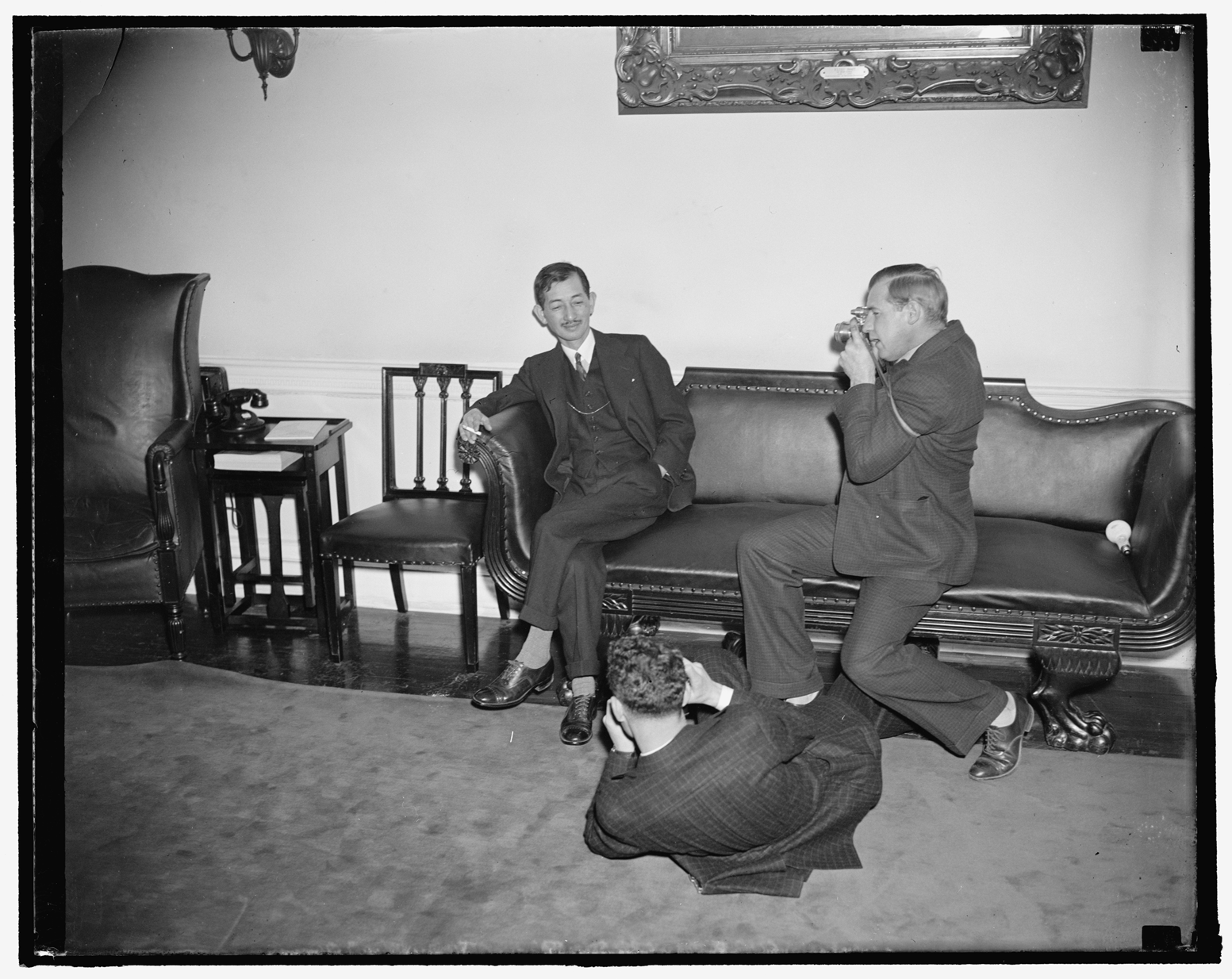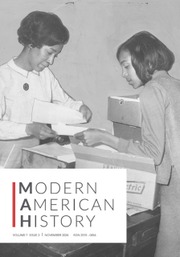On December 12, 1937, a squadron of Japanese airplanes, without warning, bombed and sank the USS Panay and three Standard-Vacuum Oil (Stanvac) ships anchored in the Yangtze thirty miles upriver from Nanjing. “The whole world took note,” Newsweek blared, when U.S. President Franklin D. Roosevelt, in a move “without parallel in American history,” rebuked Emperor Hirohito for Japan's unprovoked attack on the United States, a neutral party in the undeclared war between China and Japan. The incident caused the most serious crisis in U.S.–Japanese relations before the bombing of Pearl Harbor. Voices calling worldwide for a stronger U.S. stand against Hitler and the emerging Axis powers rejoiced. “The Isolationists, hitherto so powerful in Congress, are on the defensive,” London's Guardian newspaper declared, and “the Panay incident is largely responsible.”Footnote 1
Yet as quickly as it arose, the Panay crisis died down. The U.S. government's reluctance to confront Japan and the latter's swift response—including an official apology, full compensation for U.S. lives and property, and a genuine outpouring of sympathy from the Japanese public—pushed both sides to formally settle the Panay dispute by Christmas (Figure 1). This speedy reconciliation has led to the Panay bombing's image as a non-event—a minor prelude, at best, to the Second World War in Asia.Footnote 2 However, by shifting one's perspective from the Panay to the Stanvac ships moored beside it, the incident assumes a deeper significance. Striking the Panay, Japan struck a vital nerve center of the triangular economy linking the United States, Japan, and China, anticipating the wrenching economic transformations that World War II would inflict on U.S.–Asian relations. For decades, the Panay patrolled the Yangtze in order to protect Stanvac and other U.S. firms as they built sophisticated multinational supply chains, consumer markets, and commercial networks that closely entangled the U.S., Japanese, and other nations’ economies. If war came, the Panay bombing's brief but profound aftermath showed, it would be no simple, clean collision between distinct U.S. and Japanese capitalisms. It would mean a revolution in countless overlapping economic relationships, both local and global, which met in China's growing Yangtze River trade.

Figure 1. Japanese ambassador Hirosi Saito meets with U.S. pressmen before offering Japan's formal apology over the Panay to the U.S. government (Library of Congress, Prints and Photographs Division).
Leading the nation's anti-Japanese opposition, a left-liberal coalition of consumer groups, political activists, and civic and religious leaders mounted an anti-Japanese boycott across the United States, urging retailers and consumers to avoid “Made in Japan” labels. College students burned Japanese goods in massive bonfires, local celebrities starred in anti-Japanese rallies, and activists protested the flood of Japanese products that reached U.S. ports and marketplaces. Although U.S. government and business leaders officially disapproved of the boycott, at its peak, polls found well over half of the U.S. population supported the movement, particularly in large cities and the U.S. Northeast. Boycotters aimed to strike Japan's trade-dependent economy where it hurt most: its manufactured goods trade. Above all, this meant Japanese silk. Nearly all of North America's silk—about half of Japan's total U.S. exports, alongside novelty and luxury items and large quantities of toys, housewares, and other light industrial goods—made Japan the United States's second-best import and third-best export market. “If your stockings are SILK,” a popular boycott pamphlet warned Boston-area consumers, “they helped Japan to murder thousands of babies and women, workmen and peasants, of China.”Footnote 3
Liberal outrage over the Panay could not sever the thick web of financial, commercial, and industrial ties between Japan and the United States, two of the Asia-Pacific's leading economies. Boycotters faced crafty, cost-conscious retailers, who resisted anti-Japanese merchandising proposals and easily evaded a Federal Trade Commission struggling to enforce fabric types and clothing sizes—let alone regulate “country of origin” labels in a global marketplace. Distributing convoluted buyer's guides, boycotters unrealistically expected Americans to ditch multinationally sourced bicycles with Japanese frames, U.S.-made toothbrushes with small Japanese handles, and entire categories of cheap, popular articles such as imitation pearls and miniature Christmas décor widely sold by chain and department stores like Woolworth's and Macy's. Encouraging consumers to buy unionized U.S or Canadian products, boycotters overlooked one invisible, overpowering fact. Through silk, bamboo, and other raw materials, North American and Japanese supply chains were too intertwined to label many products as simply “American” or “Japanese.” Furthermore, despite Central European producers’ bold efforts to steal Japan's leading market share, no competitive alternatives could overtake Japan's commanding place in U.S. supply chains.Footnote 4
Few knew these interconnected realities better than U.S. laborers, particularly hundreds of thousands of textile workers who specialized in turning Japanese supplies into U.S. products sold worldwide. “The silk industry is an American industry in which American capital is invested and American labor is engaged,” explained Emile Rieve, the president of the American Federation of Hosiery Workers, defending the AFL-CIO's opposition to a complete anti-Japanese boycott (Figure 2). Boycotters attacking Japan, labor critics warned, also attacked Chinese and North American textile mills, U.S. Southern cotton farmers, and West Coast commercial interests interwoven with Japan in a transpacific economy. Confronted by such obstacles, the U.S. boycott movement, like similar boycotts in Europe, Latin America, and Asia, subsided by early 1938.Footnote 5

Figure 2. In the wake of the Panay bombing, American Federation of Hosiery Workers members march in protest against the U.S. silk boycott from Washington, DC's Union Station to the White House (Library of Congress, Prints and Photographs Division).
The bombing of the Panay also reignited popular allegations that U.S. international business interests had dragged the United States into the First World War, and stoked growing worries that it would happen again. Across the political spectrum, Congressmen and commentators criticized Stanvac (a joint subsidiary of Standard Oil of New Jersey, later Exxon, and Socony-Vacuum, later Mobil) for exposing the Panay to Japanese attack and publicly scrutinized the corporation's intimate ties with U.S. and European governments and sprawling global operations, which accounted for Asia's largest U.S. foreign direct investment and a sizable chunk of the region's war damages.Footnote 6
But the Panay crisis did not neatly fit these simplistic World War I–era conspiracy narratives; its actual risks were less urgent, though equally menacing, in the long run. Hardly a hulking battleship as many imagined, the Panay was a small patrol boat, designed to navigate Yangtze shallows and protect U.S. lives and property from Chinese piracy. Conveyed in similarly modest ships, Stanvac's core business in a notoriously difficult China market was not military industrial sales, as critics accused, but a much humbler trade: Standard Oil's smokeless Mei Foo (“beautiful confidence”) kerosene lamp (Figure 3). Hailed for bringing modern light to the Chinese masses, Stanvac kerosene did more than augment U.S. foreign oil sales; it connected oil fields, consumer markets, technological innovations, and trading networks from the Americas, Africa, and the Middle East to China, Japan, and Southeast Asia (Figure 4). Stanvac, like most U.S. businesses, prospered not by stoking war and revolution, but by avoiding and managing such risks. Competition and compromise, rather than conspiracy, marked its relations with European empires as well as native enterprises, such as Japan's newly thriving automobile and aviation industries and China's familial mercantile networks, which extended Stanvac's marketing operations across China's countryside. From the perspective of the Panay's U.S., British, and Chinese survivors, inured to conflict and cooperation along the internationalized Yangtze River, the Sino-Japanese War seemed like “just another crisis.” Normally, they recalled, it was a place of “easy” living where “all the nations seemed to get along reasonably well.”Footnote 7

Figure 3. Standard Oil's Mei Foo kerosene lamp, ca. 1895. Dolph Briscoe Center for American History, University of Texas at Austin, Courtesy of ExxonMobil.

Figure 4. A mule train carrying Stanvac kerosene across Southeast Asia, ca. 1910s–1930s. Dolph Briscoe Center for American History, University of Texas at Austin, Courtesy of ExxonMobil.
Thus, far from provoking U.S.–Japanese conflict, U.S. businesses sought to restrain rising prowar voices in U.S. and Japanese public circles. “The calmness with which the news has been received,” The Commercial and Financial Chronicle remarked, “is a gratifying tribute to the self-control … of the American people.” Despite some initial nervousness in the financial markets, the U.S. business climate quickly stabilized, as Panay-related fears gave way to larger concerns about deepening geopolitical instability in Europe and a renewed recession in the United States. Caught between China and Japan, Stanvac adapted as U.S. businesses usually adapted to war and revolution; it sought to play both sides in pursuit of its own bottom line. At the same time Stanvac and U.S. businesses protested Japanese restrictions in China, they clung to far more lucrative markets in Japan's expanding empire. (In Stanvac's case, Japan provided nearly 70 percent of annual revenues in diesel and advanced-industrial oils, dwarfing China's kerosene sales.) China's markets would exist “no matter who was in political control,” leading U.S. businessmen told an interviewer. With China's “biggest need” constituting “law and order,” it “might as well be” Japan. Many felt, as an internal General Motors report stated, Japan's “complete domination” could spell “an upturn in [U.S.] business” in China. Despite rising economic restrictionism and military confrontation on both sides of the U.S.–Japanese divide, most U.S. businesses preferred an accommodationist U.S. policy toward imperial Japan.Footnote 8
Difficult as it is to imagine today, Japan, not China, was the poster child of “free trade” globalization before World War II. Japan, not China, awed Westerners with its swift adoption of Western education, business practices, and modern infrastructure. Along the expanding frontier of emerging markets beyond Europe and North America, Japan, not China, excited U.S. trade officials, businessmen, and citizens as the rapidly industrializing workshop of the world. “We are just coining money,” an overseas Ford Motor Company manager marveled at U.S. industrial corporations’ success in Japan's fast-rising markets. By causing a collision between a robust U.S.–Japanese capitalism and speculative yet promising U.S.-Chinese capitalism, the Panay bombing revealed the horns of a growing dilemma. Challenging the United States's imperial rights in China, the very rights which upheld Stanvac and other Western firms’ activities, Japan's predatory moves cannily imitated the West's own ruthlessness—a fact which U.S. businesses grudgingly admired. “Is there not taught in our institutions of learning,” a major financial magazine defended Japan, that men sought “by hook and by crook every advantage over their rivals?” As Japan increasingly constricted U.S. businesses in China—forcing U.S. ambassador Joseph Grew to complain that the Panay “incident” now seemed the chronic “condition” of U.S.–Japanese relations—most Americans expressed little desire to retaliate. This was not because they were “isolationist,” as self-styled “internationalist” critics argued; on the contrary, they were quite globally minded. Americans closest to East Asia's markets vividly read in the Panay's flames what others saw dimly: war with Japan would require not only the violent remaking of U.S.–Japanese relations, but Americans’ far-reaching relations with one another and the wider world. “When that time comes the chances are that the entire world will get a new deal, because there will be little or nothing left of the old,” New York's Commerce and Finance magazine reeled before a Panay-inspired future. “We do not wish to speculate further on the possibility.”Footnote 9






